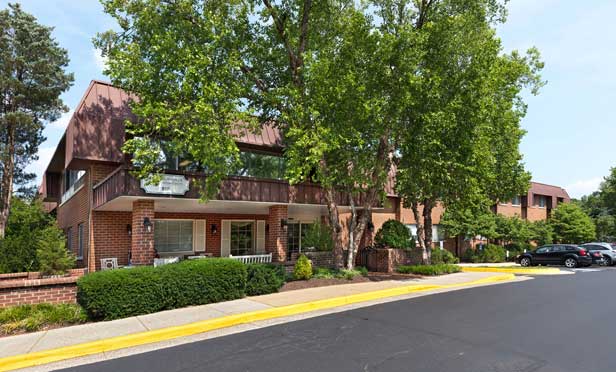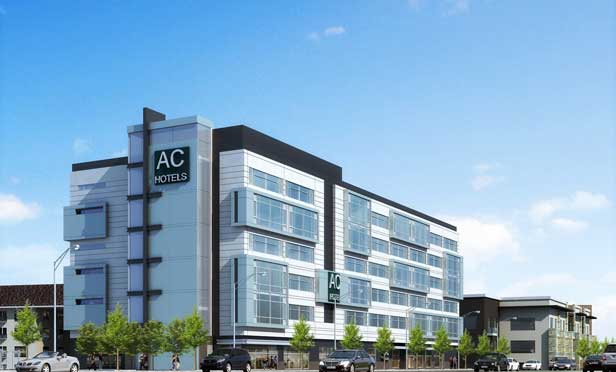In March of this year, Pebblebrook Hotel Trust approached rival hotel REIT LaSalle Hotel Properties with an all-stock acquisition offer. LaSalle demurred and then demurred again as Pebblebrook made two additional offers. In the meantime, LaSalle was doing its due diligence. It contacted 20 potential buyers, according to chairman of the board Stuart L. Scott. Ten potential buyers were interested enough to execute confidentiality agreements to receive non-public information. In the end, LaSalle agreed to be acquired—but not by Pebblebrook. Rather, some two months after Pebblebrook made its initial offer for LaSalle, the REIT accepted Blackstone Real Estate Partners VIII's $33.50-per-share bid in an all-cash transaction valued at $4.8 billion.
Few market observers were surprised. Not only had Blackstone just announced it would be taking another REIT private earlier that month—Gramercy Property Trust for $7.6 billion in cash—but the REIT sector overall had been pricing well below private valuations. Indeed, the market has seen several public-to-private transactions and it is expected that more will occur this year.
“We have been telling clients this for some time now,” shares Hans Nordby, managing director of CoStar Portfolio Strategy. “We're also doing analyses for clients on which REITs to take private because they are too cheap” nowadays.
But even REITs' low net asset values don't tell the whole story behind the Blackstone-LaSalle deal and the many other acquisitions that have occurred in recent months and years. Transactions are being driven by a number of factors including the new tax law, the immense amount of liquidity still waiting to be invested and the desire for companies to gain scale and diversify into well-performing asset classes.
“Companies are looking for deal flow, so they're making acquisitions,” says Shahab Moreh, head of the real estate practice group at accounting firm Mazars USA. “The acquiring company has the capital and the other company has the deal flow. Combined, the two make for a strong real estate company.”
This is a trajectory the CRE industry has been on for years, says Greg Leisch, Newmark Knight Frank's senior managing director of market research. Over the past 15 years, for example, there has been a massive consolidation among service providers. “JLL didn't exist. Cushman & Wakefield was a completely different entity,” he points out. “Many service providers have disappeared or been swallowed up because of a need for growth and scale.” He adds that up until eight years ago, it was essential for companies to have a national footprint. Since then, going global has been the goal.
A broader global footprint was one of the drivers behind Colliers International Group's announcement that it is acquiring a majority stake in Harrison Street Real Estate Capital. With an office in London, Harrison Street has a strong presence in Europe, and Colliers chairman and CEO Jay Hennick says the transaction will, among other things, provide a new growth platform that will help integrate its existing operations in Europe.
Another example is European-based International Workplace Group, which owns and operates a network of about 3,000 co-working locations in 1,000 cities in 114 countries under such brands as Regus, Spaces, Signature, Open Office and MOS. Late last year, it received all-cash acquisition offers from Canada's Brookfield Asset Management and private equity group Onex. The offers were spurned and now, according to news reports, the company is being pursued by Lone Star, Starwood and TDR Capital.
It is an impressive state of affairs for an industry that, by all accounts, is in the later stages of the cycle. Transaction volume has been trending down since 2015—which was the last time there was a similar surge in portfolio transactions—and for the first two months of this year deals were slightly down from the same period in 2017. It is widely expected these numbers will improve as the mega-billion-dollar transactions are added up.
But as these mega-deals are pursued and closed, it's worth examining the smaller transactions that are also occurring within these asset classes and the fundamentals behind them.
 Earlier this year a REIT acquired the Mt. Vernon Nursing & Rehab Center, located in suburban Washington, DC. Even though 130-bed facility had recently generated a negative cash flow, it generated 12 offers and an ultimate sale price that was $1 million higher than the original asking price.
Earlier this year a REIT acquired the Mt. Vernon Nursing & Rehab Center, located in suburban Washington, DC. Even though 130-bed facility had recently generated a negative cash flow, it generated 12 offers and an ultimate sale price that was $1 million higher than the original asking price.CO-WORKING DRIVING OFFICE GROWTH
IWG, for instance, is not just being pursued for its extensive global footprint but also because co-working is fueling the office market, at least in the US.
In this year's first quarter, the US office market slowed, recording just 3.7 million square feet of positive absorption, according to JLL. But co-working has shown nothing but growth since 2010, posting a 23% increase in annual occupancy figures. In fact, if co-working providers had been left out of first-quarter statistics, the firm notes, the US office market would have actually contracted.
The sector is embarking on its second iteration, with larger co-working providers such as WeWork Spaces and IWG now targeting enterprise users. These companies are also expanding their footprints, opening locations in suburban and second-tier markets.
It's a move that makes sense to these companies as many suburban markets have begun to develop into mini urban-like, transit-oriented centers with a work-live-play vibe. “There's a change to suburban development, with new residential growth, restaurants and amenities,” says Michael Berretta, head of growth strategy for IWG. “We've opened 30 or 40 new centers in the past 12 months and two-thirds of those are in suburban locations.”
Proponents of the business model say that co-working's flexibility will continue to drive growth. “People don't know what their business is going to look like in 10 or 15 years, so tenants don't want to be locked into long-term leases,” says Marcus Moufarrige, COO of Servcorp, a virtual office space provider that is listed on the Australian Stock Exchange. Progressive business owners recognize that they can increase their yield per square foot and have been motivated to acquire more assets and open new offices, he adds.
SENIOR HOUSING'S STRONG FUNDAMENTALS
Skilled nursing is an asset class beset by long-standing troubles. Reduced occupancies, falling government reimbursements, an aging inventory of facilities and the growing costs of care are just a few. “The economics of the costs and how the operations will be paid for have been real pressure points for years,” says Avison Young principal Jim Kornick. “But the problem is acute now.”
Indeed, in March nursing home chains Orianna Health Systems and HCR ManorCare filed for Chapter 11 bankruptcy after restructuring deals on their unpaid rent with their REIT landlords Omega Healthcare Investors and Quality Care Properties, respectively.
And yet, also in March a public REIT snapped up the Mt. Vernon Nursing & Rehab Center, a 45,654-square-foot skilled nursing facility in an affluent suburb of Washington, DC. The REIT is leasing the facility, which has 69 rooms and 130 licensed beds, to a large regional operator with which it has an existing relationship.
Avison Young marketed the facility to 20 investors and although it had a strong reputation within the medical community, it had recently generated negative cash flow and only 100 beds were currently in use. Nevertheless, the team generated 12 offers and the community ultimately sold for $13 million—$1 million higher than its original asking price.
How does one reconcile these conflicting dynamics? One answer lies in senior housing's demographics. Senior housing has been experiencing a trough in demand for the past few years, explains Mizuho Research managing director Richard Anderson. The average age of a person entering senior housing is 83; the birth rate also dropped 83 years ago during the Great Depression. “We're going to start to see that demand cycle trend back up starting this year,” Anderson says. It will be a long-lasting cycle in which the flow of residents into senior housing will increase dramatically—a flow that will also affect skilled nursing.
This positive outlook for the sector's future drove, also at least in part, one of April's mega-transactions: healthcare REIT Welltower's agreement to acquire Quality Care Properties for $20.75 per share, or approximately $1.95 billion in cash. This was a deal with many moving parts, a reflection of the current troubles in the sector. Welltower also negotiated a separate agreement with ProMedica Health System in which ProMedica will acquire Quality Care's troubled skilled nursing tenant HCR ManorCare when it completes its Chapter 11 bankruptcy. ProMedica will also acquire Quality Care's other major tenant, Arden Courts, the nation's second largest provider of post-acute services and long-term care.
The two deals are expected to close concurrently, with Welltower forming an 80/20 joint venture with ProMedica to facilitate the transactions and to hold the HCR ManorCare and Arden Courts real estate. The total deal value, including all of these moving parts, comes to $3.117 billion.
 One interesting component of Unibail-Rodamco's proposed $15.7-billion takeover of Westfield Corp. is OneMarket, the network for retailers, venues and partners. Based out of the 1.6-million-sf Westfield San Francisco Centre, the retail tech lab will be spun off and listed on the Australian Stock Exchange.
One interesting component of Unibail-Rodamco's proposed $15.7-billion takeover of Westfield Corp. is OneMarket, the network for retailers, venues and partners. Based out of the 1.6-million-sf Westfield San Francisco Centre, the retail tech lab will be spun off and listed on the Australian Stock Exchange.RETAIL'S DRY POWDER
Along with skilled nursing, the retail asset class is suffering its share of woes. As of mid-April retailers have announced 77 million square feet of closures, according to CoStar Group—compared with the 105 million square feet that closed for all of 2017. For all the energy and enthusiasm exhibited at the industry's RECon show in Las Vegas this year, it is clear that retail's shakeout shows no sign of abating any time soon.
And yet Seritage Growth Properties, a 2015 retail spinoff from Sears Holding Co., is finding paths toward growth. What Seritage has been doing is converting some of the Sears stores in the portfolio it inherited to other uses or finding higher-paying tenants for the property, says David Berliner, leader of BDO's restructuring and turnaround services practice. “They can double or triple the rent they were getting for the same space and also bring some new vitality to the shopping centers.”
Timing is everything with this strategy, though, he continues. If Sears were to suddenly liquidate, for instance, Seritage probably wouldn't make it. But Sears is still plugging away, which has given Seritage the time needed to reposition the real estate.
“I've seen some with a Whole Foods on the first level and other uses on the second and third level,” Berliner says. Seritage has converted other former Sears stores to movie theaters and in other cases, demolished some properties, he adds.
Most recently it has been forming joint ventures to sell stakes in its best assets in order to redevelop them into new uses. For example, Seritage and Invesco Real Estate recently announced a joint venture partnership to own what they call The Collection at UTC, which will be an adaptive re-use of the existing Sears store and auto center at Westfield UTC in La Jolla, CA.
The transaction values The Collection at UTC at $165 million, including costs to complete the project. Seritage sold a 50% interest in the asset to a separate account managed by Invesco and received proceeds of approximately $44 million, which it used to repay existing mortgage debt associated with the property. The partnership plans to convert the Sears store and auto center into 226,200 square feet of space that will be leased to retailers and dining, entertainment and fitness brands.
But perhaps the most impressive endorsement of retail as a viable investment category is the $19 billion that private equity funds have raised as of mid-May for investments that have a retail component, according to Preqin. In fact, the figures show that investor activity in retail has remained robust despite the numerous store closings and bankruptcies in recent years. Total deal value for retail assets was $38 billion in 2016 and $43 billion in 2017. Fundraising for vehicles that include retail has also stayed steady and in 2017 these funds raised $42 billion—the highest total since 2008. Preqin noted that a third of funds closed in each year since 2013 includes some retail property within its mandate, “indicating the abiding appeal these investments have within the industry.”
The retail sector also saw a few of its own mega-mergers: earlier this year Brookfield Property Partners and GGP entered into a definitive agreement for Brookfield to acquire the rest of the shares of GGP that it doesn't already own. The cash-and-stock deal totals $9.25 billion.
However, the market signaled its disapproval of the deal, promptly punishing retail REIT stocks in the wake of the news. The theory behind the upset was that it had been broadly expected that GGP would trade at a higher price. The fact that it didn't (assuming shareholders approve the deal) thus points to a decline in valuations across all mall stocks, including the REITs that hold high-quality assets. Trepp's Jen Loukedis, though, noted in a blog post that this reaction belied a year-over-year increase in inline store sales for such REITs as Macerich, Simon Property Group, Taubman and GGP.
The takeaway from that episode was a bit disconcerting for the industry: For some time, the market had been making a distinction between high-end retail REITs and those that held class B and C properties. Now it appears that the line is blurring. Investing in retail, in short, is not without its complications.
Another more recent mega-deal deal, albeit one driven by a desire to stand firm against the growing e-commerce threat, was Unibail-Rodamco's proposed $15.7-billion takeover of Westfield Corp. In May it received a nod of approval from Westfield's shareholders, effectively paving the way for the international transaction to close. There had been concerns that the deal might fall apart; its value had eroded by more than $1 billion since its December 2017 announcement by a drop in Unibail-Rodamco shares and changes in foreign-exchange rates. Still, shareholders approved it and amidst the hubbub after the vote, Steven Lowy, the retired co-CEO of Westfield, declared to television news reporters that the deal could lead to more merger and acquisition activity in the industry.
One interesting component of the transaction is OneMarket, Westfield's San Francisco-based retail tech lab that will spin off as a separate entity to be listed on the Australian Stock Exchange that will be headed by Lowry.
Plans for the company include the development of a new retail messenger system called Hadley that will connect shoppers to retailers to give retailers better insight into shoppers' browsing history and purchases, according to a recent investor presentation. Nordstrom will be using the system, according to the presentation. Capital, in other words, is not just flowing into the retail sector, but also into technology that will help it stay competitive.
 Simon Property Group is stepping up its strategy of adding hotels to retail properties, as it did with the 166-room AC Hotel Atlanta Buckhead at Phipps Plaza.
Simon Property Group is stepping up its strategy of adding hotels to retail properties, as it did with the 166-room AC Hotel Atlanta Buckhead at Phipps Plaza.THE MIXED-USE STORY
Besides its embrace of e-commerce, or rather its embrace of technology to help it better compete with e-commerce, retailers are also bullish on the mixed-use model. Usually this has meant some combination of apartments, but increasingly hotels are being added to the mix. As one example, recently Marriott International announced it planned to open five new hotels, specifically its select-service brands AC by Marriott and Residence Inn, at retail centers owned by Simon Property Group, over the next several years.
This is not a new strategy for either company; Simon began adding hotels to its retail properties—some of which were Marriott flags—about 15 years ago and now it's stepping up this strategy. Already, there are more than 15 Marriott-branded hotels located at Simon Properties and the REIT plans to add 10 hotels to its properties through 2019, up from a total of four in 2016 and 2017.
The approach makes sense: retail centers like the traffic that hotels deliver and hotel guests like to be located within walking distance of the dining and entertainment amenities that retail centers are increasingly adding to their tenant mix. Or here's another use case: Such hotels also appeal to locals, who may book a hotel for a special shopping trip such as a wedding gown hunt, according to Jamie Krueger, director of sales and marketing at the AC Hotel Atlanta Buckhead at Phipps Plaza.
Not that the hotel sector's economic story is uniformly bright. When Pebblebrook was making its play for LaSalle, for example, one of the reasons the latter spurned the offer was due to Pebblebrook's history of missing RevPAR guidance.
LaSalle released a statement noting that its “Board has significant concerns that Pebblebrook's share price reflects its overly-optimistic growth targets. Given Pebblebrook's history of consistently missing its RevPAR outlook over the past three years, and based on current market conditions, LaSalle is not confident Pebblebrook will meet its guidance.”
One takeaway from LaSalle's decision to reject Pebblebrook? In this season of the deal, if you don't like an offer there is no need to fret. Another suitor will be along shortly.
© Touchpoint Markets, All Rights Reserved. Request academic re-use from www.copyright.com. All other uses, submit a request to [email protected]. For more inforrmation visit Asset & Logo Licensing.








